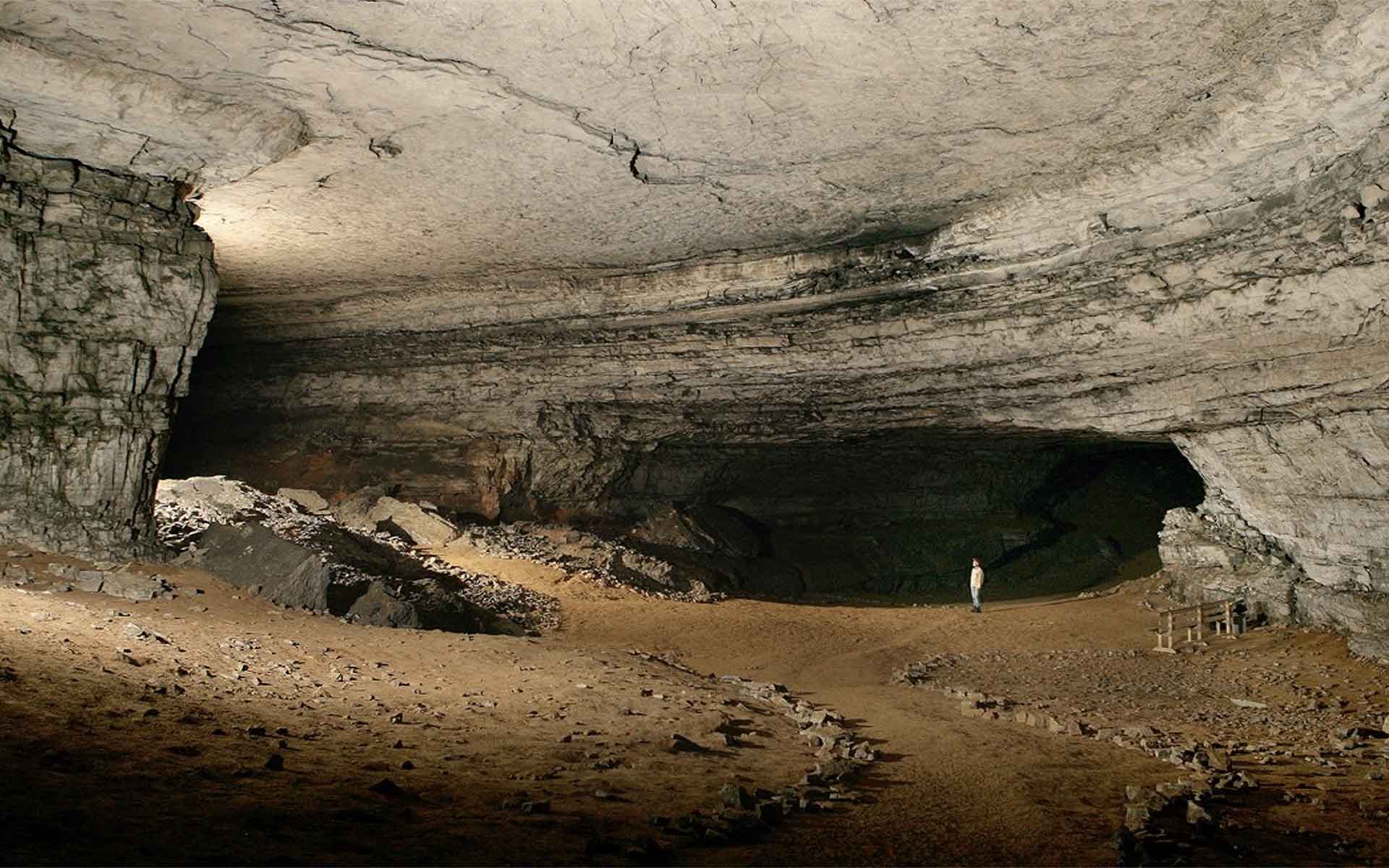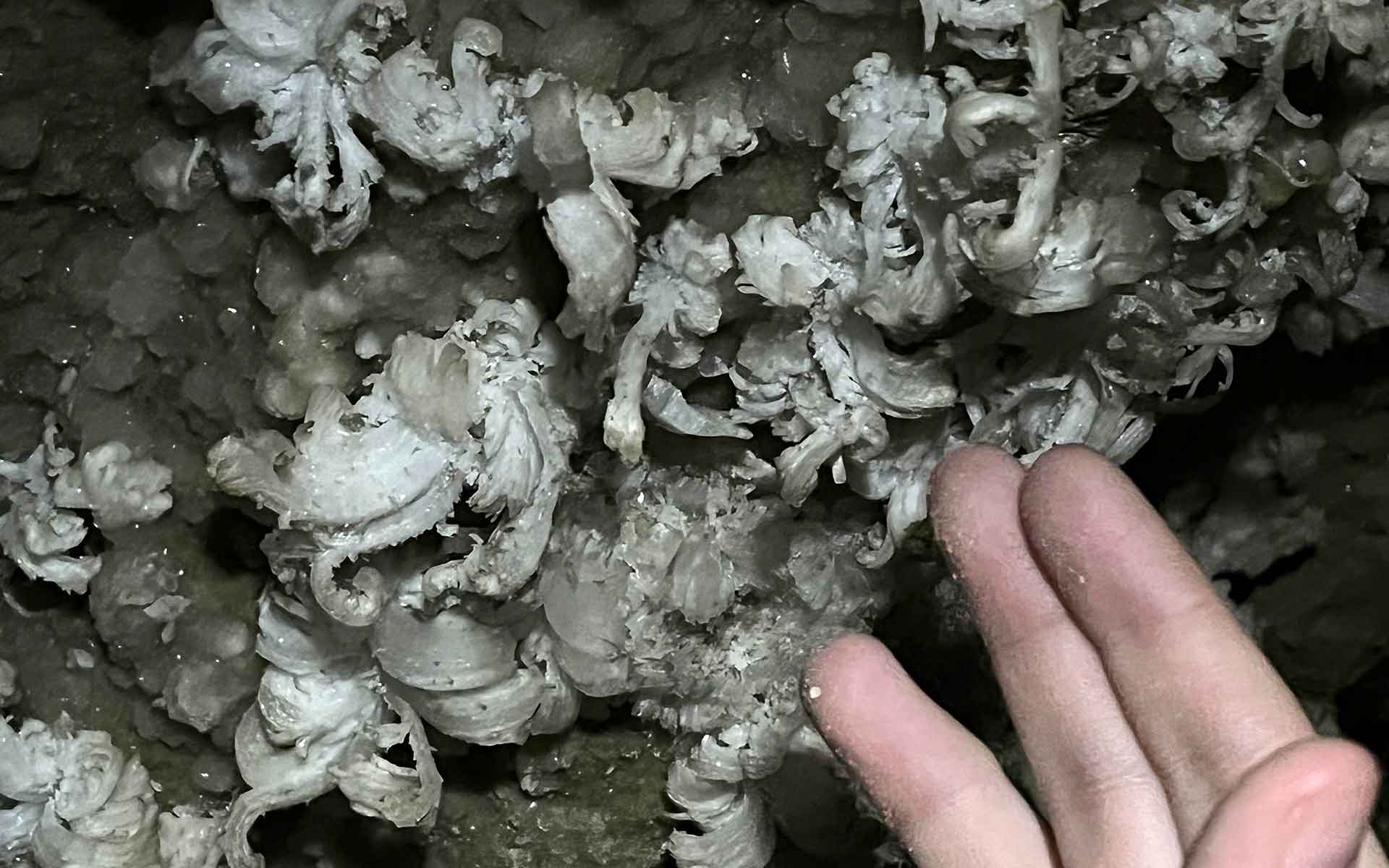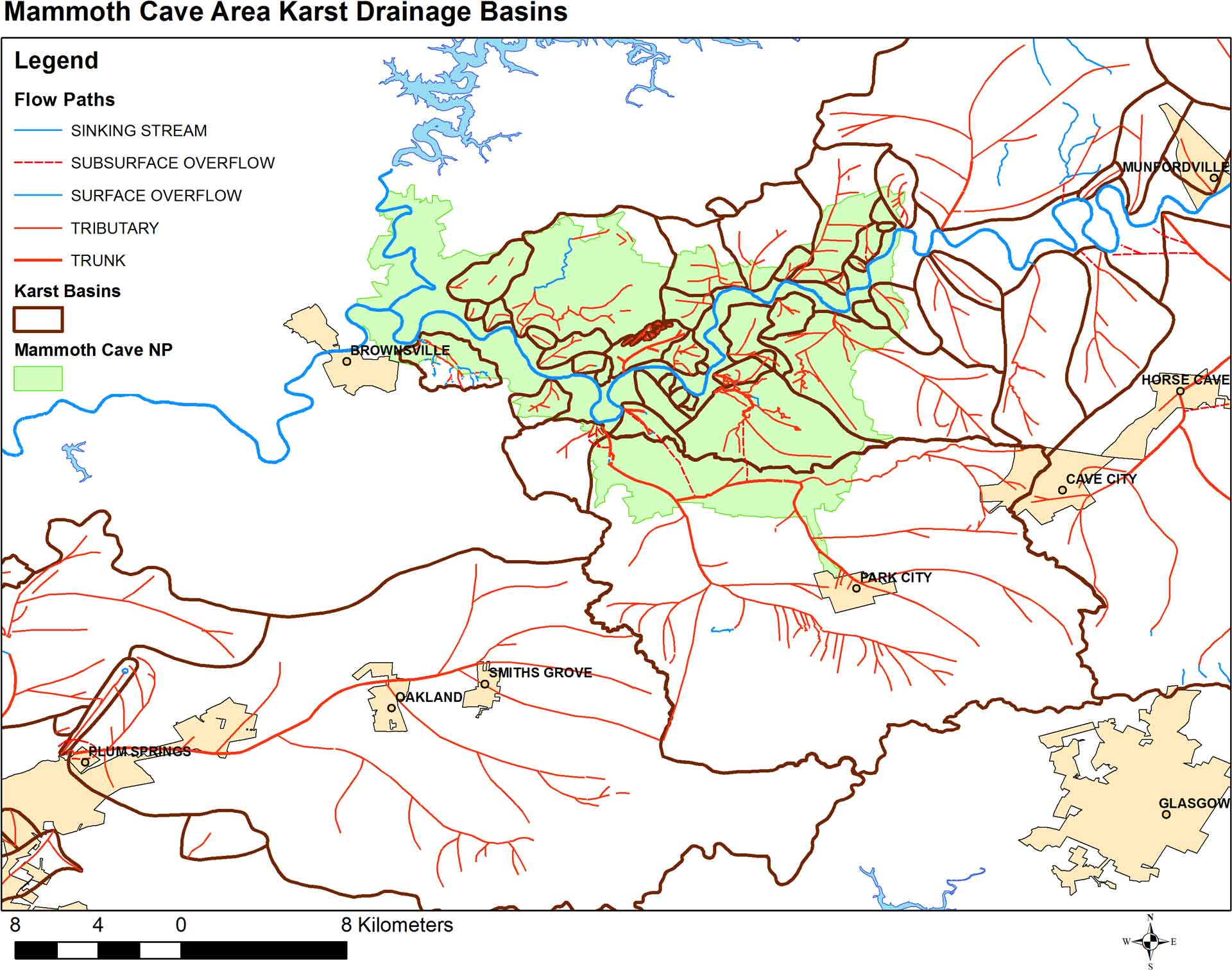
The Mammoth Cave System contains the most extensive known system of cave passages in the world (Art Palmer).
Geological Period
Miocene to Holocene
Main geological interest
Geomorphology and active geological processes
Location
Southcentral Kentucky, United States of America
37°12’05”N, 086°08’39”W
The Mammoth Cave System contains the most extensive known system of cave passages in the world (Art Palmer).
The Mammoth Cave System is the longest known cave in the world and is still being explored.
mapped regularly. Passages contain large rooms, vertical shafts, beautiful minerals, fossils, and other features that are superlative examples of their type. Cave passages record major events in landscape evolution of eastern North America back to the Pliocene (Granger et al., 2001). This is also a significant landscape with respect to biodiversity. Diverse surface and underground habitats are home to at least 1,925 species. Of these 43 are endemic, 49 are cave-limited, and 20 are threatened or endangered. This is the type locality for 33 cave-limited species.
- Geological description
The Mammoth Cave System has a known length of more than 670 kilometers (Hobbs et al., 2017; Bledsoe et al., 2021). More than 300 kilometers of passages in nearby caves have also been explored and mapped, some of which may someday connect with Mammoth Cave. The caves are developed within a nearly horizontal sequence of about 120 meters of relatively pure carbonate rocks of Carboniferous age, overlain in many areas by clastic rocks that form resistant ridges. Mammoth Cave is a rare fossil locality that shows changes in ancient fish faunas through rock sequences. The Mammoth Cave aquifer drains an recharge area of several hundred square kilometers. Underground streams forming the cave flow northward from the extensive sinkhole plains of the Pennyroyal Plateau, beneath the Mammoth Cave Plateau, and emerge from springs on the Green River. Fisher Ridge Cave, with a known length of more than 200 kilometers, comes close to connecting with the eastern edge of Mammoth Cave, as does the 50+ km long Whigpistle Cave to the west. The cave systems are composed of several, interconnected levels that record the last several million years of regional landscape development and, in particular, evolution of the Green and Ohio Rivers.
- Scientific research and tradition
The area has a long history of cave and karst research, attracting scientists from around the world to study the cave and surroundings (Groves et al., 2021). Techniques used to study karst hydrogeology, ecology, and other aspects of karst science were developed here, including groundwater tracing with fluorescent dyes.
- Reference
Bledsoe, L.A., Groves, C. and Toomey, R. (2021) ‘The Mammoth Cave National Park World Heritage Site’, Zeitschrift für Geomorphologie, Supplementary Issues, pp. 145–193. Available at: https://doi.org/10.1127/zfg_suppl/2021/0694.
Granger, D.E., Fabel, D. and Palmer, A.N. (2001) ‘Pliocene−Pleistocene incision of the Green River, Kentucky, determined from radioactive decay of cosmogenic 26Al and 10Be in Mammoth Cave sediments’, GSA Bulletin, 113(7), pp. 825–836. Available at: https://doi.org/10.1130/0016-7606(2001)113<0825:PPIOTG>2.0.CO;2.
Groves, C. et al. (2021) Mammoth Cave National Park. Natural Resource Report NPS/MACA/NRR 2021/2258. Fort Collins, Colorado: National Park Service, p. 585.
Hobbs III, H.H. et al. (eds) (2017) Mammoth Cave: A Human and Natural History. Cham: Springer International Publishing (Cave and Karst Systems of the World). Available at: https://doi.org/10.1007/978-3-319-53718-4.
- Author(s)
Chris Groves.
Crawford Hydrology Laboratory, Western Kentucky University, Bowling Green Kentucky. USA.
Zhong Liang.
International Research Centre on Karst under the auspices of UNESCO, Guilin. China.
Rick Toomey.
Mammoth Cave National Park, Mammoth Cave, Kentucky. USA.
Luo Qukan.
International Research Center on Karst under the auspices of UNESCO, Guilin. China.


